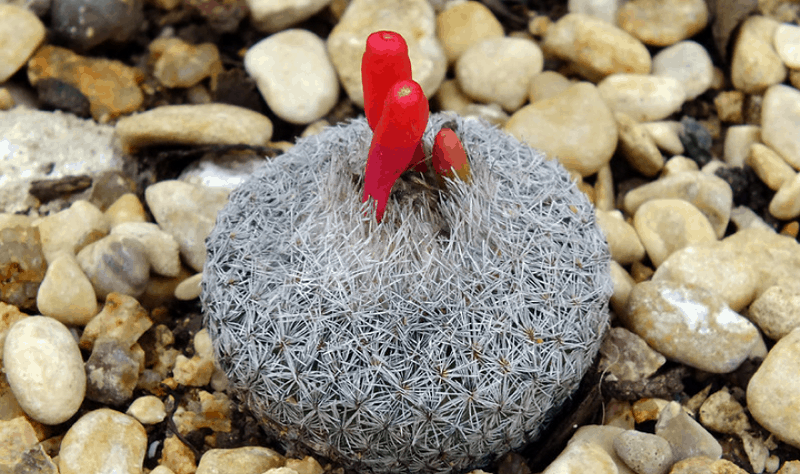Epithelantha micromeris is a very popular cactus in collections around the world for its size and simple but beautiful flowering.
It is a species native to Mexico and the southwest of the United States where it grows mainly in plains or high cliffs of mountains present in the well-known Chihuahuan desert.
It is currently a species marketed worldwide as a collection plant.
Stems and thorns
This cactus develops a globose stem with conspicuously depressed apex; Over the years the stem takes a columnar bearing, although it is covered at the base by numerous young children that develop.
The stem size is +/- 8 cm and +/- 5 cm in diameter. The stem is formed by rows of small somewhat pyramidal tubers that hold very woolly areolas at their apexes.
From the areolas arise +/- 20 small spines approximately 0.2 cm long.
Flowers and fruits
A large concentration of wool is produced at the apex of the stem; in that region the flowers will emerge.
The flowers have pinkish-white corolla segments and generally occur in small groups.
The fully ripe fruits have an elongated cylindrical shape and a very conspicuous reddish color.
Tips to take care of the Epithelantha micromeris “Button Cactus”
Epithelantha micromeris is easy to maintain in the garden if the following cultivation requirements are taken into account:
Illumination
Cultivate preferably fully exposed to the sun for a better result.
In tropical countries, it appreciates a bit of partial shade during the warmer hours of summer days.
Temperature
It needs to grow in cool or warm climates where temperatures remain between 18ºC-26ºC.
Do not expose to temperatures below 5ºC to avoid tissue damage and future rot.
Substratum
It requires a very airy substrate with a basic or neutral pH for a better development.
Commercial cactus substrates with an extra layer of coarse sand can be used.
Container
It is a cactus with a thick radical system being necessary to use vessels somewhat deep and wide, although the stem is small in sight.
Irrigation Frequency
Water every 7-10 days during the hottest seasons of the year. In the winter season the irrigation should be spaced once a fortnightly and always with temperatures above 15ºC.
Plagues and diseases
Rarely affected by pests, although their roots can be damaged by mealybugs and nematodes.
Always use disinfected substrates to avoid nematodes.
Fungi appear on the stem if the relative humidity is greater than 80% for much of the year.
Multiplication
Very simple from the separation of grandfathers or by seeds. Apply rooting hormones to the children because they sometimes have a hard time rooting.
Sometimes the children are grafted to prevent them from dying in the attempt to root.
Conclusion
It is a plant up to 8 cm high and between 4 to 6 cm in diameter.
It has a globular stem, depressed at the apex and branches from the base forming small groups.
On the stem it has small tubers and numerous white spines (5 to 8 mm in length), spirally covering it completely.
The cortex and the medulla are not mucilaginous. The flowers are small, pale pink to white.
The fruit is claviform, generally long, without scales, of red color, without having attached the dry remains of the perianto.
The seeds are narrow, ovoid, oblique and sunken.
It is a kind of slow growth. Of a large range, but that is threatened with extinction.
Those who help in seed dispersal are winds, rain and wildlife.
Hope this article was helpful.

1 thought on “Epithelantha micromeris “Button Cactus””
Comments are closed.